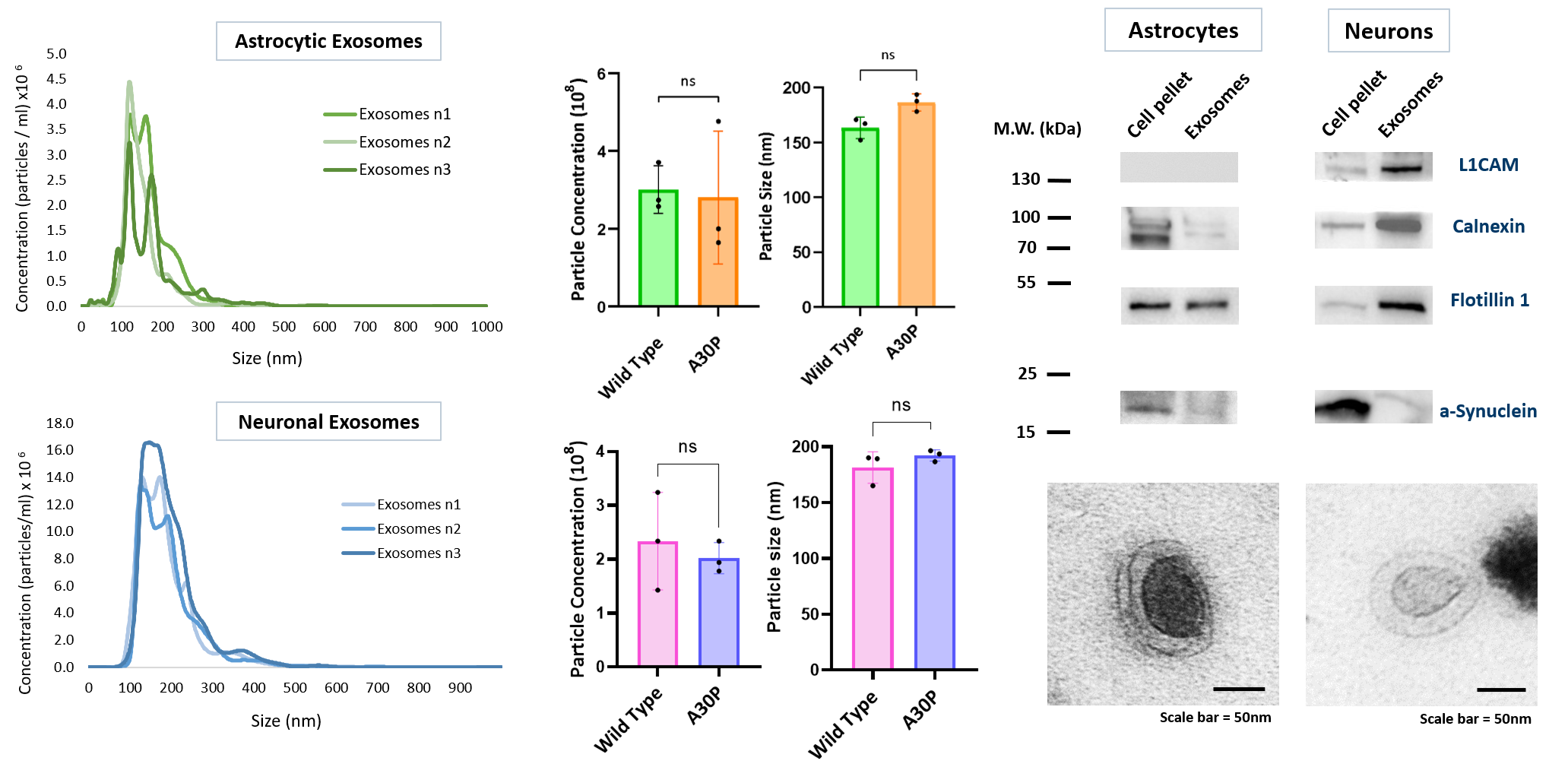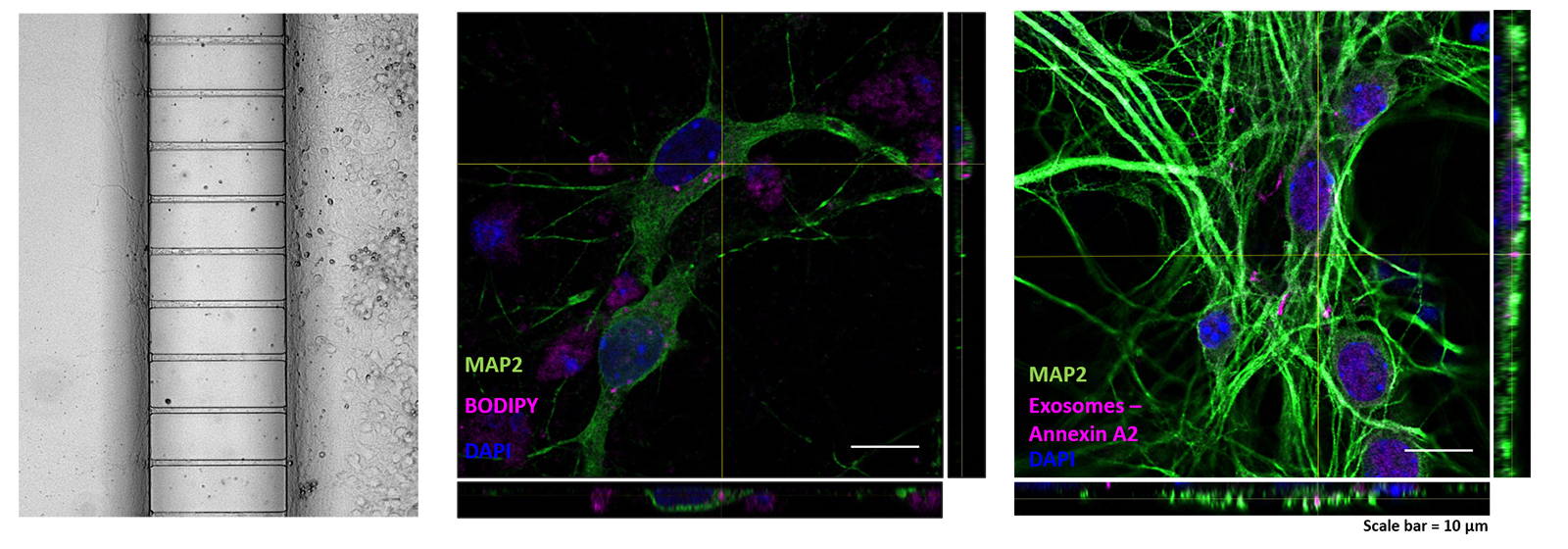Category: Parkinson's Disease: Genetics
Objective: Our goals were: (i) to characterize the molecular mechanisms associated with the transfer of miRNAs from astrocytes to neuronal synapses via exosomes in transgenic mouse models of synucleinopathy, and (ii) to study the dysregulation of the synaptic RNAome as an early event in alpha-synuclein-associated disorders.
Background: Alpha-synuclein (aSyn) is key played in Parkinson’s disease (PD) and other synucleinopathies as it accumulates in pathognomonic inclusions in the brain. Currently, the prevailing hypothesis is that aSyn pathology may spread throughout the brain in a prion-like manner, but the precise molecular mechanisms involved in the spreading are still unclear. Several studies have shown that aSyn can be released from cells packaged into exosomes. Exosomes are one type of extracellular vesicles (EVs) carrying proteins, nucleic acids, and metabolites, thereby regulating homeostasis by influencing immune response, CNS communication, inflammation, and neurodegeneration. As such, exosomes carry great hope as potential as biomarkers in the diagnosis of PD and other disorders, as they may reflect molecular alterations characteristic of the disease.
Method: Neurons were isolated from E15.5 and astrocytes from p0 mouse brains and cultured for 14 or 16 days respectively.
Exosomes were isolated from cell culture media of astrocytes and neurons by sequential differential ultracentrifugation. Successful isolation was confirmed by confocal microscopy, TEM, nanoparticle tracking analysis and immunoblotting analyses.
Transfer of exosomes was assessed using 2 different models – uptake of exosomes tagged with BODIPY dye when exposed to neurons for 48h in microfluidic chambers (MFCs), transfer of exosomes from astrocytes transduced with lentivirus encoding for a specific exosomal marker (Annexin A2) when the cells are co-cultured in MFCs.
miRNAs were isolated from exosomes using TRIzol.
Results: We found that exosomes isolated from astrocytes (Figure 1), tagged with BODIPY, were taken up by neurons within 48 hours of treatment and under physiological conditions (Figure 2). We confirmed that astrocyte-derived exosomes contain small RNAs, including miRNAs.
Conclusion: Neurons and astrocytes release exosomes under physiological conditions.
The concentration and the size of the exosomes extracted from transgenic aSyn wild-type or A30P-aSyn mice are identical.
Astrocytic exosomes are taken up by neuronal cells.
To cite this abstract in AMA style:
A. Chopra, T. Outeiro. The role of RNA-carrying exosomes in synaptic physiology and in synucleinopathies [abstract]. Mov Disord. 2023; 38 (suppl 1). https://www.mdsabstracts.org/abstract/the-role-of-rna-carrying-exosomes-in-synaptic-physiology-and-in-synucleinopathies/. Accessed April 25, 2025.« Back to 2023 International Congress
MDS Abstracts - https://www.mdsabstracts.org/abstract/the-role-of-rna-carrying-exosomes-in-synaptic-physiology-and-in-synucleinopathies/


